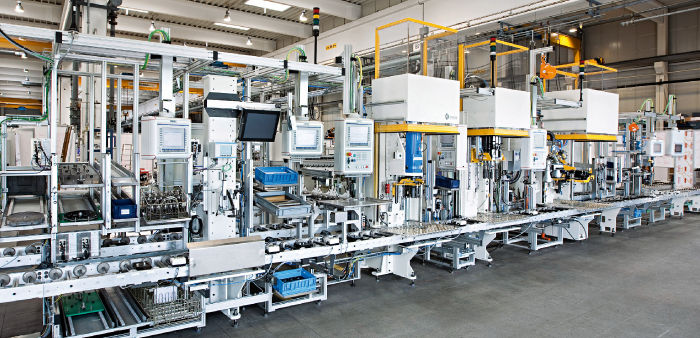
Industrial facilities are incredibly complex. They are composed of specialized buildings that house powerful, intricate machinery and equipment that is operated by highly-skilled workers. For this equation to be successful, every component of the process must be of the highest quality.
Let’s look first at the workers. Manufacturing today is incredibly complex, with parts built to ever-more stringent specifications. The assembly processes are equally demanding, requiring that workers have a high level of skill, attention, and dexterity.
The ability to work nimbly with parts while still performing dangerous tasks like welding requires safety equipment that can provide adequate protection without interfering with functionality. That’s an important consideration in the design of Tillman welding gloves, and it’s seen further in all the equipment used during industrial welding.
Welding is a very important part of the assembly process, but it’s not the only part. Line personnel must also be adept with computers, pneumatic tools, powerful presses, and many other items that are used in the assembly of manufactured products today.
The tools themselves are also important. We’ve touched on the precise work that they are required to do, and it means more than just being effective in their first weeks on the line.
Quality tools and equipment not only have strict tolerances of performance to meet when placed in service, they also have to be able to sustain that level of output for as long as possible. Maintenance, repair, cleaning, and calibration must be easy and cost-effective for the tools to remain usable for the expected service life.
Those tools are utilized on a variety of raw materials. In some cases, these materials are natural products such as wood and cotton. With these materials, it can be very difficult to source quality inputs rapidly and with consistent characteristics. As a result, procurement programs must be particularly agile and resourceful.
Synthetic materials are no less demanding. Metals, manufactured fibers, rubber, plastics, glass, and countless other inputs that are fabricated elsewhere must arrive with the right characteristics to tolerate the pressure, heat, welding, and other forces that will be applied to them on their road to becoming a finished product.
Pulling it all together happens under the roof of the manufacturing facility, and not just any roof–or any walls, floor, or utilities–will do the job adequately. Facilities must first be secure so that theft or even corporate espionage cannot take place, so alarm systems, video surveillance, locking procedures, and credentialing processes must be rigorous and strictly followed.
Proper temperatures and humidity are also essential. Many raw materials, machines, and finished products can perform poorly if moisture levels or temperatures are not in the appropriate ranges. In addition, personnel can tire out quickly or become subject to accidents when the facility’s climate is not suitable for a long shift at work.
Inside those facilities, there must be adequate power, water, and sewage functionality to support operations. All the machinery requires heavy quantities of electricity, gas, and water to function correctly, so the building itself and even the surrounding area must be equipped to meet these demands.
Manufacturing is the heart of most of the world’s most advanced economies. For it to be that essential financial engine, it must perform at a high level in every way, starting with the workers who bring home the wages and going through their tools, safety equipment, raw materials, and facilities. When everything comes online in top condition, the output of the company is of the highest quality and truly fuels economic growth.










